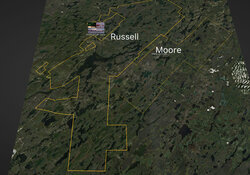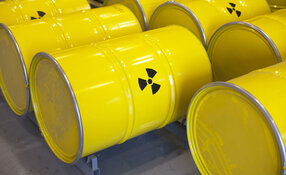Rick Mills: It's a short-term hiccup and it's probably presenting us with one of the greatest buying opportunities for carefully selected uranium stocks that a retail investor can get. The global nuclear renaissance that was underway in early 2010 was happening for specific reasons: concerns about climate change, reducing carbon footprints, energy security and the rising cost of fossil fuels. And then the disaster hit. It gave pause to the renaissance, but none of these reasons have gone away.
Germany's kneejerk reaction shut seven of its nuclear reactors. They won't be opened again. Its other reactors will also be completely mothballed by 2022. But the thing is that in 2002 Germany's center-left coalition enacted a law to phase-out nuclear power. Last autumn, Merkel's center-right coalition government decided to extend the lifetimes of the country's 17 reactors by an average of 12 years. That decision was based on a judgment that Germany could not meet its power demand using only natural energy sources, such as wind and solar. The country doesn't have abundant natural gas reserves. So, I find it pretty ironic what's happening over there. I think Germany may suffer when it finds it can't maintain its manufacturing competitiveness. Germany is now burning more coal, and already buying more nuclear power-generated electricity from France and the Czechs, who use the old Soviet-style reactors.
TER: There's a lot of talk right now about thorium replacing uranium as the fuel in nuclear reactors. These reactors could use thorium, which is much more stable than uranium, and roughly performs the same function. Do you think that thorium will ultimately replace uranium?
RM: Ultimately, but we're 35 to 40 years away from incorporating that technology. Uranium's got a long way to run. I believe thorium will be the answer one day, but not for several decades at least.
TER: What about the U.S.? It has some reactors slated to come onstream over the next 5 to 10 years. Do you think that the U.S. is going to follow suit with Germany?
RM: The U.S. is going to ramp up its nuclear power. On April 21, the U.S. Nuclear Regulatory Commission renewed the operating license for the U.S.'s largest atomic plant, the Palo Verde nuclear generating station in Arizona, for 20 years. The U.S. Department of Energy just dedicated a new research facility on May 3. The U.S. is accelerating the advancement of nuclear reactor technology. It's studying the performance of light water reactors and developing highly sophisticated modeling that will help accelerate upgrades at existing nuclear plants.
That doesn't sound like the U.S. is in any way, shape or form going to cut back. As a matter of fact, U.S. Secretary of Energy Steven Chu just said nuclear energy is the nation's largest source of carbon-free power and it is an important part of the U.S. energy mix moving forward.
Uranium supplies are going to get very tight. There's going to be fierce competition for available material in both the spot and long-term markets. Investors should be looking at uranium-focused juniors with money in the treasury. We're being set up for the perfect storm in uranium.
TER: Since the disaster at the Fukushima plant in Japan, the spot price for uranium has fallen to about $50/lb. from around $73/lb. in early March. Many junior uranium miners and explorers have seen their share prices fall dramatically since then, too. What are some companies that you think offer a lot of value as a result?
RM: Uranerz Energy Corp. (TSX:URZ; NYSE.A:URZ) is one of the best uranium companies out there. The management is top-notch. These guys wrote the book on in-situ leach mining.
Uranerz is going to be included in the Russell 3000 Index again. If you want to see something interesting, pull up a chart from June 2009 when it was included on the Russell the last time. Funds that track that index have to include these new additions. We're talking about an awful lot of money. It's going to be interesting to see what happens to Uranerz' share price as this becomes common knowledge.
Uranerz is waiting for its final permit to start well field construction and build its production facility. Currently, the company has $45M in the treasury; that's $0.60 a share. Costs to get into production are estimated to be $35M, so the company has some money for contingencies. I expect Uranerz to be in production in 12 to 15 months. Currently, two drill rigs are performing exploration drilling. Uranerz has identified over 483 kilometers (km.) of alteration-reduction trends on its project areas which cover 38,000 hectares. Uranerz has explored only 15% of the identified trends. One drill is doing delineation drilling for the construction of the well fields.
TER: We're talking about the Powder River Basin Project in Wyoming?
RM: That's right. The Nichols Ranch project is expected to produce a maximum of 2 Mlb. of yellowcake annually. Initially, the project is targeting 600,000 to 800,000 lb. per year. The company has long-term offtake agreements signed for a portion of production with two major U.S.-based nuclear operators, including Exelon Corp. (NYSE:EXC). The U.S. produces 27% of the world's nuclear power from 104 nuclear reactors—these reactors use 50–55 Mlb. of uranium a year but the U.S. only produces 4 Mlb.
Uranerz is a company that has its act together and is definitely sitting at a sweet spot for investors. While there's a little bit of blood in the streets right now concerning uranium, people should be looking at this sector.
TER: That production could be coming on-stream right about the time when uranium prices could be rebounding.
RM: The spot market is definitely going to tighten up before then and people are going to be looking for long-term contracts. This setback, if anything, makes the market stronger. Prices will eventually move higher.
TER: Potash has somewhat of an inverse relationship to uranium prices. Earlier this month, corn futures reached an all-time high, which ultimately means higher food prices for all of us. It also means there's a greater need for fertilizer and that bodes well for junior mining companies looking for potash. Do you believe that potash prices will remain as high as they are now?
RM: Yes I do and going higher. Food and how we grow it are going to be dominant investment themes for decades to come. Our population increases geometrically. Our food supply can only increase arithmetically. We've got major problems in addition to our growing population. One of the biggest threats we are facing is the loss of arable land that was used for food production. Land is being used for biofuels, topsoil is being eroded away and the agricultural land base is being paved over. We're destroying our freshwater aquifers. But world population growth and three billion people climbing the protein ladder are the elephants in the dining room. Tonight, 220,000 new mouths will need to be fed at the dinner table.
TER: How does potash mining differ from gold or copper mining?
RM: Unlike other resource plays, potash does not have a cycle. Demand is always going to be there, which makes potash an excellent play in a long-term agricultural commodities bull market. Potash markets are never disrupted by political interference. Food shortages will always trigger social and political instability, such as the riots in the Middle East and Africa. All governments fear a hungry populous.
Companies like Agrium Inc. (NYSE:AGU) and PotashCorp (TSX:POT; NYSE:POT) have very solid bottom lines, but they are mature companies. Investors should start moving down the value chain to junior companies with big potash resources that are going to create value for their shareholders.
TER: What companies fit that bill right now?
RM: We've been following three companies on Ahead of the Herd for quite some time now.
Verde Potash (TSX.V:NPK), formerly Amazon Potash, is putting together a fairly large project in Brazil. By the time it finishes, I wouldn't be surprised if it had enough potash to supply the Brazilian market, the largest potash market in the world, for 30 years.
The company also has phosphate at the Apatita Project and should have a resource calculation out by the end of the third quarter. It is also planning drilling on five other targets bordering their thermal potash product, the Cerro Verde. Recent news suggests they will have a limestone resource as well. This is a company that is definitely in the right area at the right time with the right resources.
The thing about this company that most people don't realize is that if the potash price is $430/t in Saskatchewan, Canada, it would take $100/t to reach a port in Brazil. Then it would take another $100/t to get it to a blending facility near farmers. The price that Verde's competing against is not $430—it's $630—they are already close to that blending facility. According to the last test the company did on its product, thermal potash is about 17% to 19% more effective than KCI, or typical potash.
TER: Verde's chairman, Peter Gundy, was an executive with PotashCorp. He certainly has some significant background in the potash mining business. He also has the right connections to get the money necessary to bring this company forward.
RM: Absolutely true, and let's not forget to mention the tremendous efforts of President and CEO Cristiano Veloso, who has done an amazing job pulling it all together, and VP of Corporate Development Jed Richardson, who has been there from day one. Also the government of the Brazilian state of Minas Gerais has signed a memorandum of understanding regarding support for potential financing.
TER: What's the next name you're following on Ahead of the Herd?
RM: Western PotashCorp (TSX.V:WPX) has done really well for its shareholders and we were early into this one as well. It's adjacent to BHP Billiton Ltd. (NYSE:BHP; OTCPK:BHPLF) and Agrium's exploration permits, and within 13 km. of PotashCorp's Rocanville facility. The company has 34 Mts. of indicated potash with 245 Mts. of inferred.
Pat Varas and his team have done an exceptional job advancing this project so quickly. The company is doing a prefeasibility study to be completed in the fall, and is planning to start on its feasibility study in August. That's an amazing amount of engineering going into the project right now. WPX has a memorandum of understanding signed with the city of Regina for water. It's doing environmental studies and community visits.
Western's land acquisition program has now successfully secured over 2,550 acres at the company's preferred plant site location. Securing the plant site location is an important aspect of the ongoing feasibility process as the environmental and regulatory approval processes and project schedules are dependent on it.
TER: Is it a takeover target given its proximity to PotashCorp?
RM: It could be. One of the majors might want to take it and put it on the shelf; the Chinese or Indians have to be interested. I think that's very possible.
TER: Is there a point where juniors get on the radar screen of larger companies and wake up the sleeping giants like BHP Billiton?
RM: Definitely. I think the major players, the BHPs of the world, are probably looking for at least a prefeasibility study. They want to see solid numbers—capital expenditures and costs of production, net present values and internal rates of return that actually have solid studies behind them. None of these majors have a history of moving too quickly. They're trudging behemoths that do things at their own pace and need surety in a deal.
TER: There was one more potash company you wanted to talk about. What was that one?
RM: Encanto PotashCorp (TSX.V: EPO) in Saskatchewan, Canada. What makes this one interesting is that they are collaborating with several First Nations groups to develop projects on their lands.
TER: In fact, Encanto was developed with that in mind, right? It was developed with the idea that it would work with First Nations to develop these resources.
RM: Absolutely. The first project Encanto started was developing an 80-to-100-year resource on the Muskowekwan's land. The goal is to develop a producing mine as quickly as possible. EPO's upcoming preliminary economic assessment (PEA) remains on schedule to be released in the first half of August. The PEA is designed to determine the most economical method for potash extraction and will make a recommendation on a solution or conventional mining operation.
It hasn't had the success in the market that Verde and Western have seen because the necessary reserve vote on continuing with development of the project hasn't happened yet and that creates uncertainty. The vote will happen in the fall; it's scheduled for late September.
TER: The whole operation hinges on that vote?
RM: Yes. Newly elected Chief Bellerose ran on a pro-potash forum. The majority of candidates also ran on a pro-potash forum, as did all eight successful councilors. I firmly believe it's going to be passed. But there seems to be some hesitation in the market over it.
TER: If the vote does go through as expected, we could we see a bump in the share price. It's at $0.23 right now.
RM: The band has approximately 1,050 eligible voters, many of whom don't live on the home reserve. For the vote to be considered a legal vote, at least 51% of eligible voters must cast a vote. For the vote to be successful, at least 51% of those voting must cast in favor. If a sufficient number of voters don't participate in the first vote then the vote is considered a failure; a second vote will be held on the home reserve 35 days after the first vote. For the second vote to be successful, a simple majority is required from those who vote. In an effort to ensure that all band members are fully aware of the benefits offered through the partnership with Encanto, Bellerose is holding open sessions in Regina, Calgary, Winnipeg, Saskatoon and Edmonton.
There are really two drivers for the stock: the vote and getting the Home Reserve Lands, which will double the land acreage (and potentially the resource). It's been a long haul, but I believe that this is going to be a successful company and we're going to see it move forward.
TER: What are some things that investors should keep in mind when investing in potash companies?
RM: It's a long-term investable trend and with surging prices for agricultural commodities, farmers are looking to boost crop yields, opening the door for fertilizer makers to raise prices. There might be temporary weaknesses, but everybody has to eat and there are 220,000 more of us at the dinner table every night. So there are compelling reasons to be looking at these companies. Also, these are not cheap mines to build. The companies need management teams capable of going out there attracting the interest from the institutions and raising the money necessary (all three companies I mentioned do). Their neighborhood is also important. Who's in the neighborhood? Could a company be a takeover target?
TER: Thanks, Rick.
Richard is host of www.Aheadoftheherd.com and invests in the junior resource sector. His articles have been published on over 300 websites, including: The Wall Street Journal, SafeHaven, Market Oracle, USAToday, National Post, Stockhouse, Lewrockwell, Uranium Miner, Casey Research, 24hgold, Vancouver Sun, SilverBearCafe, Infomine, Huffington Post, Mineweb, 321Gold, Kitco, Gold-Eagle, The Gold/Energy Reports, Calgary Herald, Resource Investor, Mining.com, Forbes, FNArena, Uraniumseek, and Financial Sense.
Want to read more exclusive Energy Report interviews like this? Sign up for our free e-newsletter, and you'll learn when new articles have been published. To see a list of recent interviews with industry analysts and commentators, visit our Exclusive Interviews page.
DISCLOSURE:
1) Brian Sylvester of The Energy Report conducted this interview. He personally and/or his family own shares of the following companies mentioned in this interview: None.
2) The following companies mentioned in the interview are sponsors of The Energy Report: Uranerz Energy Corp., Verde Potash.
3) Richard Mills: I personally and/or my family own shares of the following companies mentioned in this interview: None. The following companies mentioned in the interview are sponsors of aheadoftheherd.com, Uranerz Energy Corp., Verde Potash PLC, Western PotashCorp and Encanto PotashCorp.








































